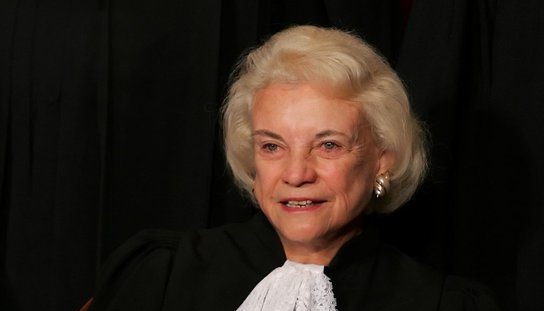Sandra Day O’Connor, the first woman to sit on the US Supreme Court, dies aged 93.
Who was Sandra Day O’Connor?
Sandra Day O’Connor, a trailblazing figure in American jurisprudence, passed away. Born on March 26, 1930, in El Paso, Texas, she left an indelible mark on the legal landscape as the first woman to serve on the United States Supreme Court.
O’Connor’s journey to the pinnacle of the judiciary began with her legal education at Stanford University, where she earned her law degree in 1952. Despite facing gender-based challenges, she forged ahead in her career. Before her historic appointment to the Supreme Court, she served as an Arizona state senator and later as a judge on the Arizona Court of Appeals.
Also Read: Alistair Darling: Cause of death, net worth, age, career, wife Margaret Vaughan, and more
President Ronald Reagan nominated O’Connor to the Supreme Court in 1981, and she was confirmed unanimously by the Senate. Throughout her tenure on the Court, from 1981 to 2006, Justice O’Connor became known for her pragmatic and centrist approach. Her opinions were often marked by a commitment to moderation and a focus on case-specific considerations.
One of her significant contributions was in the area of affirmative action, where she played a pivotal role in shaping the Court’s decisions. O’Connor’s opinions reflected a nuanced understanding of the complex intersection of race and public policy, and her “sweeping” opinions in cases like Grutter v. Bollinger acknowledged both the value of diversity and the need for narrowly tailored policies.
Also Read: Shane MacGowan: Cause of death, net worth, age, career, wife Victoria Mary Clarke, and more
In 2006, Justice O’Connor retired from the Supreme Court to care for her ailing husband, John Jay O’Connor III, who was battling Alzheimer’s disease. Her departure marked the end of an era, as she had been a crucial swing vote in numerous pivotal decisions. Despite her retirement, Sandra Day O’Connor’s legacy endures as an inspiration for aspiring lawyers, particularly women, and as a symbol of the evolving inclusivity within the highest echelons of the American judiciary.







